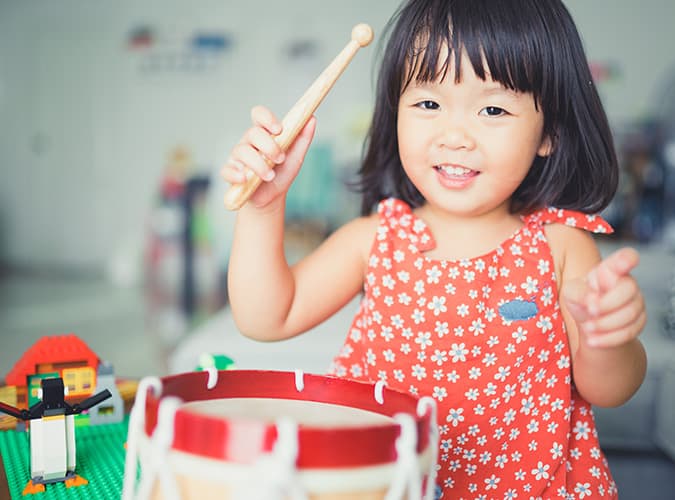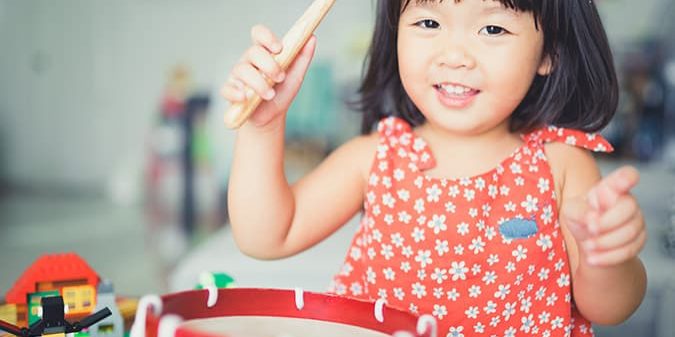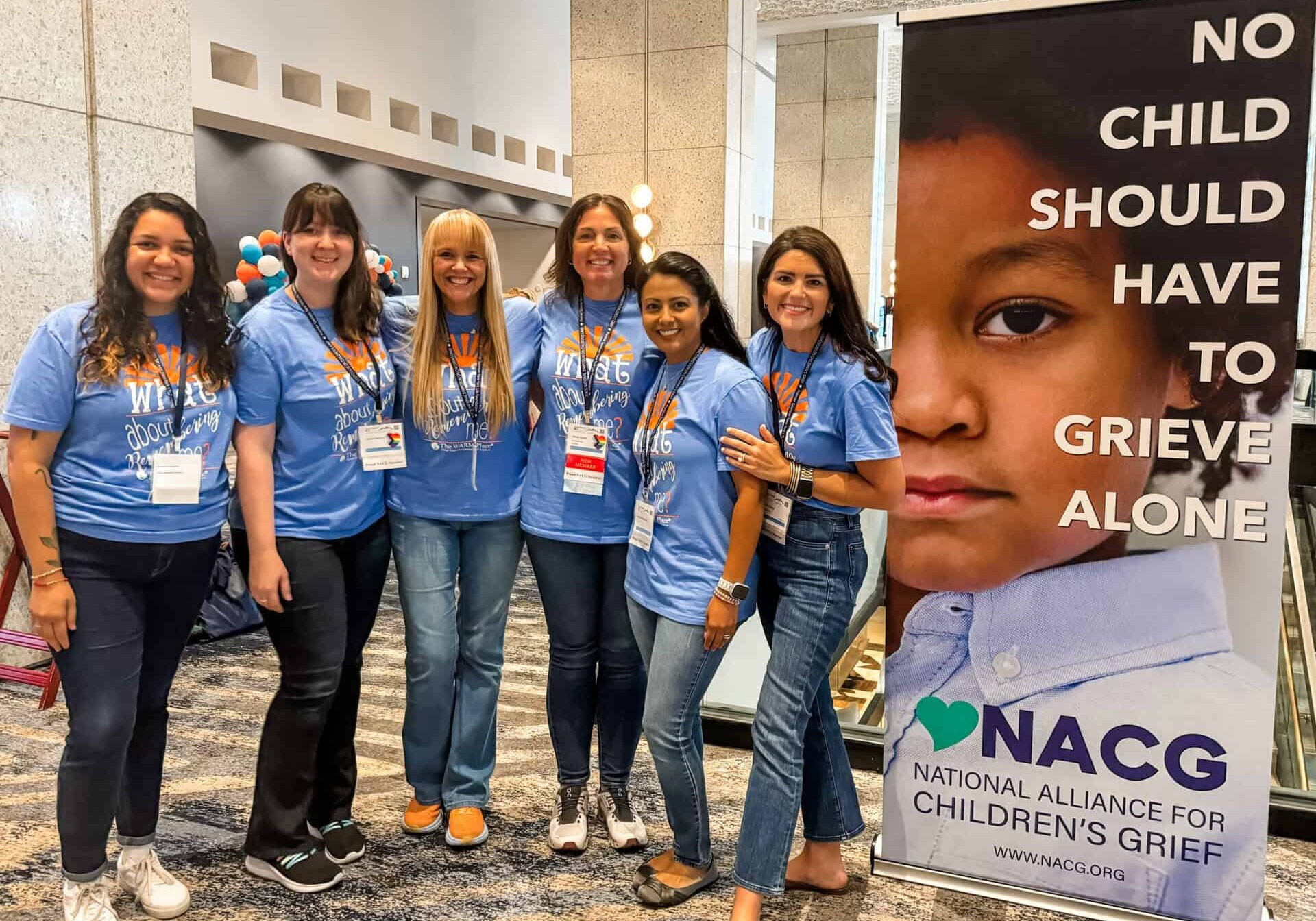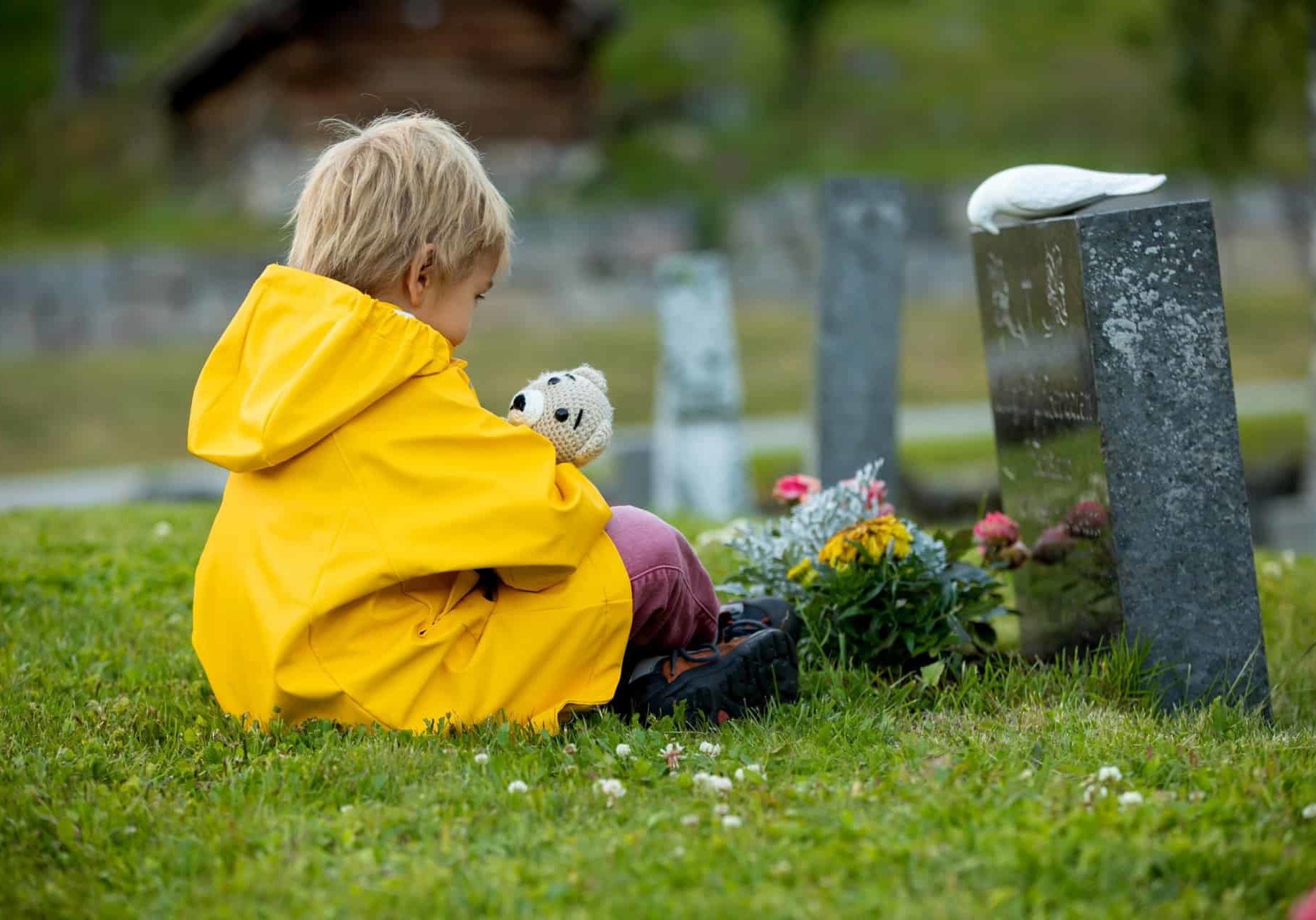Though many days of the last few months have felt like an overcast on our lives, it is important to celebrate what is in our control. Many families who aren’t able to celebrate a milestone achievement in traditional fashion, such as their child’s academic achievements this year, are still able to praise and celebrate their child’s progression in school. Though the coming months may be challenging, we encourage you to find ways to celebrate important landmarks through the chaos of the pandemic and grief.
Parade of Feelings and Celebration: Ages 3-8
Supplies: Instruments of any kind or any noise makers within your home
While managing school and work schedules and raising a family during grief and quarantine, days may feel very long. Having a parade of feelings and celebration is a fun way for your child to celebrate what they have accomplished during this difficult year. Provide your child with any instrument/homemade music maker. Once your child has picked from their favorite instrument or pot and wooden spoon, allow your child to march around your home or outside, dancing and celebrating the achievements they have done, as well as a family. No achievement is too small! Whether it was becoming potty-trained, learning to ride a bike, practicing how to calm down when experiencing difficult feelings, or using their words; this is a moment to celebrate those achievements. While your child plays their instrument, they can say and shout their achievements and dance with you. Not only is this a way to highlight their hard work and appreciate them, this can also be a fun, cathartic release for them as well.
Paper Chain of Achievements: Ages 9-12
Supplies: Any size/color paper cut into strips, scissors, marker, and stapler or tape
Achievements and celebrations may look differently this year or may be put on hold. It is important not to lose sight of what has been achieved in the midst of chaos. Provide your child with pre-cut strips of paper, or paper and scissors to cut the paper into strips. The strips should be about an inch wide. Once the strips have been cut, have your child think about what has been accomplished so far this year. These accomplishments may be academic, personal growth, character development, or strengths. These can be individual or family achievements. On each strip of paper, write down one achievement. Once the achievement has been written, bring the ends of the paper strip together and staple it or tape it to create a chain link. As your child continues to write on each strip, loop the new strip to the existing stapled/taped strip and attach it. The finished product will become a paper chain. This chain is a physical reminder for your child and family of what has been accomplished so far this year. To expand off of this activity, you can select different colored paper and assign a color to represent goals your child would like to achieve for the remainder of the year. These goals can be woven into the achievements to continue measuring and celebrating success.
Motivation Poster: Ages 13-18
Supplies: Large piece of paper/poster, markers, stickers, decorative paper, and scissors
The motivation poster is an activity that allows this age and older to be kind to themselves and give praise of their hard work in a unique way. The large piece of paper is to be created with inspiration and praise in mind in order to celebrate positive growth and create motivation for further support. Some examples of achievements that could be put on the poster are: “high school bound,” “A-B honor roll” or personality traits that they are proud of such as: “dedicated, good friend, positive attitude, and determined.” This poster can also include motivational quotes, role-models, dreams and goals, or family sayings that promote positivity and praise success. This poster is a way to celebrate the past and present and continue to motivate for the future successes.
Circle of Control and Achievement: Ages 19+
Supplies: Paper and a writing utensil
On a blank piece of paper, draw one large circle. Next draw a smaller circle inside of the large circle, then draw one more circle inside of the two you have drawn. The largest circle represents what you cannot control. The middle circle represents what you can control. The smallest circle represents what you can control and have achieved. In the space created by the largest outside circle, think about what you cannot control and write it down. Some examples could be “the length of the pandemic, changes to school and work schedules, who gets the virus, or how long grief will last.” By naming what we cannot control, this helps to highlight what we feel we had responsibility over, then move the ownership to what is out of our control. In the second circle, write down what we can control. Some examples could be “virtually staying in contact with friends and family, washing hands, or implementing coping skills when missing a loved one who has died.” Lastly the smallest circle is to acknowledge what we can control and have achieved this year. Some examples are: “completing all high school credits to graduate, applied for college and/or jobs, or created a memory book of loved one to remember them.” While grieving and managing feelings throughout the pandemic, our plates may feel full. By creating a circle of control and achievement, this allows the focus to become more finite on what we can control to move forward and to celebrate what we have achieved during such difficult days.
Time Capsule: The Whole Family
Supplies: Box of any size, items to remember and celebrate from this year, paper, and writing utensils
Creating a family time capsule allows families to focus on this year of growth and change. This capsule can highlight adjustments to the pandemic, achievements so far this year, and growth and change within grief journeys. The time capsule can be any large box or bag. Feel free to decorate the outside of the time capsule to represent your family. The items in the time capsule can be around your home, written down on a piece of paper, a piece of artwork, pictures, etc. The items in the capsule can highlight positive or negative moments in the year thus far. The goal is to not only show triumph over obstacles, but also to show achievement and create a sense of accomplishment. Some items that could go in the capsule are: “handwritten achievements; a picture of your loved one on a day you were missing him/her or to recognize a special day involving your loved one; a wrapper from an activity done in quarantine (such as gardening seeds or a favorite menu from a family dinner); artwork created by your child; or a school assignment they worked hard to complete. This is a physical representation and reminder of how grief and the pandemic can create waves of emotions that impact our days. Some days are unpredictable, and some days we feel invincible. It is vital to remember and celebrate the good achievements, no matter how small.



